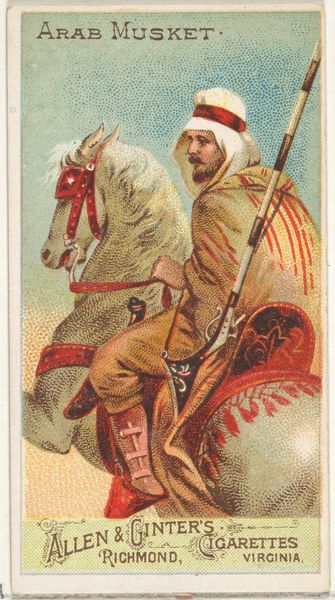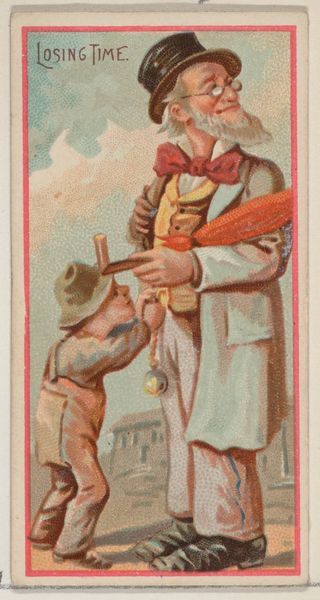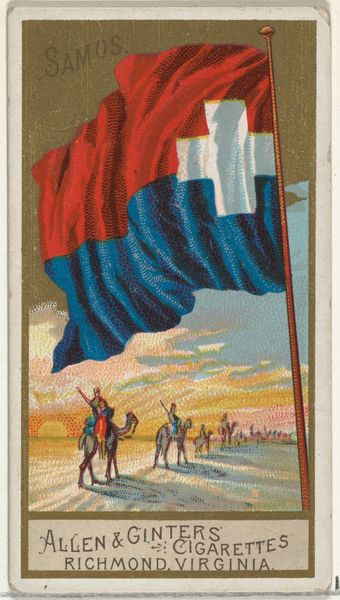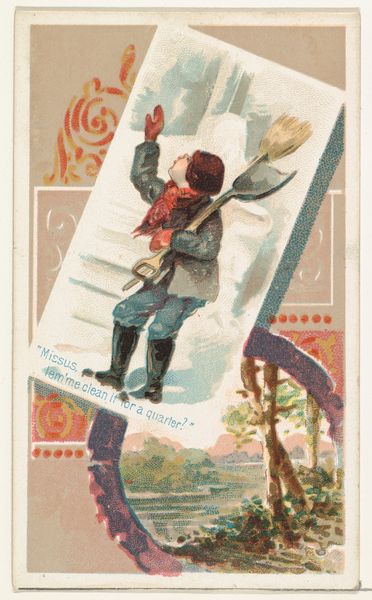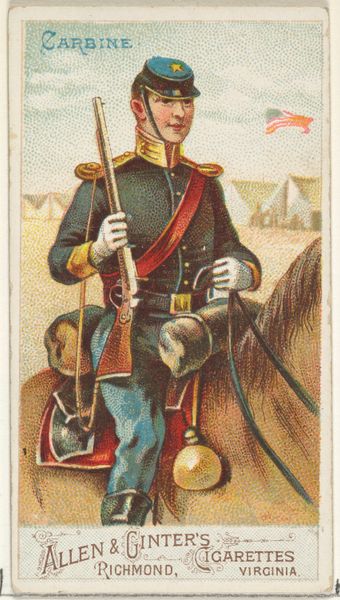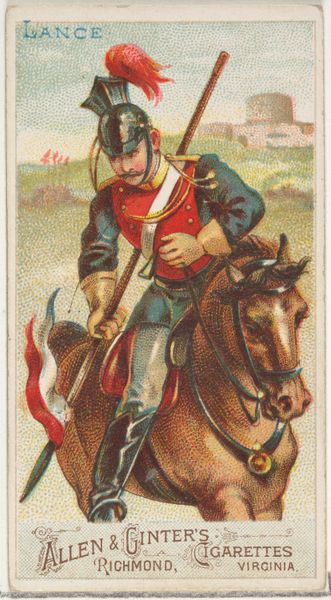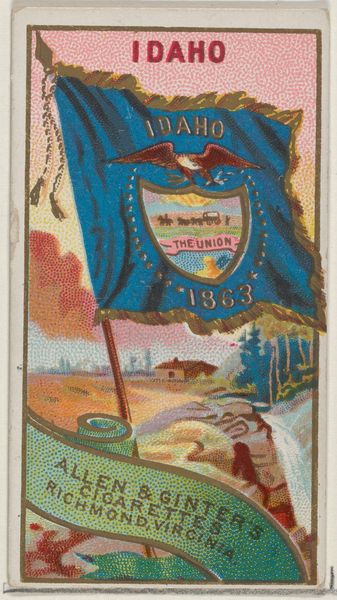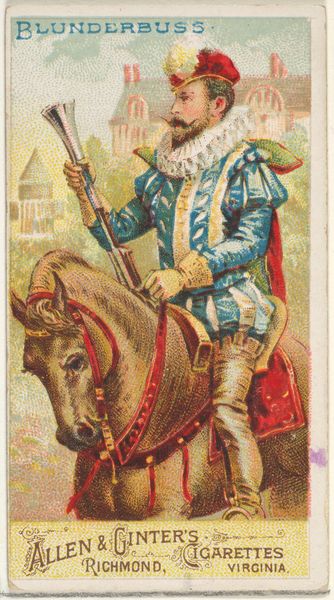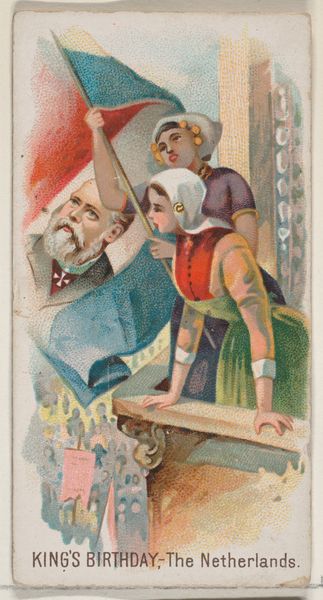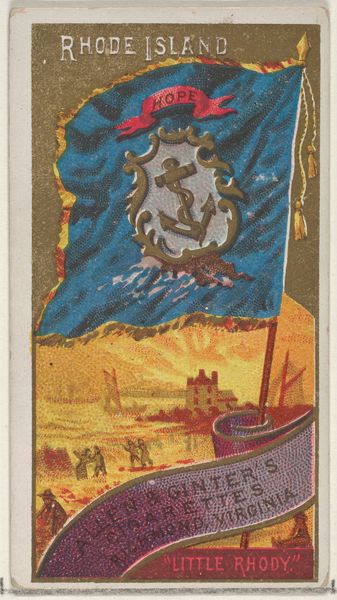
Cold Comfort, from the Jokes series (N87) for Duke brand cigarettes 1890
0:00
0:00
drawing, print
#
drawing
#
toned paper
# print
#
caricature
#
handmade artwork painting
#
oil painting
#
acrylic on canvas
#
coloured pencil
#
coffee painting
#
watercolour illustration
#
portrait art
#
watercolor
Dimensions: Sheet: 2 3/4 × 1 1/2 in. (7 × 3.8 cm)
Copyright: Public Domain
Editor: So this is “Cold Comfort,” a print made around 1890 by W. Duke, Sons & Co. It’s one of the “Jokes” series advertising Duke brand cigarettes. What strikes me is the sort of unsettling, almost theatrical air of the piece. How would you interpret this work, especially considering its historical context? Curator: This piece reflects the complex, often troubling intersection of advertising and societal attitudes of the late 19th century. Tobacco companies frequently used caricatures, particularly of African Americans, to market their products. These images were often steeped in racial stereotypes perpetuated and reinforced by popular culture and minstrel shows of the era. Editor: That’s disturbing. So, this isn’t just a winter scene, but a reinforcement of harmful stereotypes? Curator: Exactly. We have to understand the power dynamics at play. Who is producing these images, and for what purpose? This print isn't simply a humorous scene; it is a commercial object embedded within a broader system of racial representation and discrimination. The figures' exaggerated features, their clothing… what message do you think the company wanted to convey to consumers? Editor: That smoking Duke cigarettes aligned you with a certain… well, probably a prejudiced sense of superiority? It makes me uncomfortable to think this was considered humorous. Curator: It’s vital to grapple with this discomfort. Examining art like this allows us to critically assess how advertising contributed to shaping public opinion and how racist imagery became normalized. It also prompts reflection on how these historical representations continue to affect contemporary society. What do you take away from our discussion? Editor: It is not just about aesthetic or entertainment; art serves the interests of particular socio-political structures, and that historical advertisements, particularly those relying on caricature, demand our critical engagement with past prejudices to challenge biases now. Curator: Precisely. By interrogating such works, we gain crucial insights into the public role of art and the politics embedded within visual culture.
Comments
No comments
Be the first to comment and join the conversation on the ultimate creative platform.
